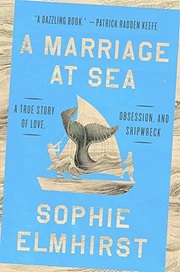
| Mon
Book Info
Subscribe
| |||
Dear Reader, Today I'm featuring one of my childhood favorite recipes. And in a few weeks I'll be featuring some of your favorites, too. I'm putting together a week of Summer Fun recipes, and I'd love to include your favorites. You can snap a photo of the recipe or type it up. Send your recipes to: Suzanne@firstlookbookclub.com I hadn't eaten any since I was a kid and I remember I used to wonder 'just how difficult is it to get that ice cream rolled up inside of the chocolate cake?' Well surprisingly it's easy. The first time I made my first Ice Cream Roll Cake. I was pretty pleased with myself because it tasted divine--just like I remembered. My presentation could have been a little better, but for the first time around, it looked pretty good. To see step-by-step photos of me preparing the cake roll, and the final result, go to: https://emailbookclub.com/photo/icecake1.html Ice-Cream Roll 3/4 cup all purpose flour 3 eggs Heat oven to 375 degrees. Line a jelly roll pan with aluminum foil and then grease it. (15 ½ x 10 ½ x1 inch) Mix flour, cocoa, baking powder and salt in a separate bowl, set aside. Beat eggs in mixer bowl on high speed until very thick and lemon colored about 3 to 5 minutes. Gradually beat in granulated sugar. Beat in water and vanilla on low speed. Gradually add flour mixture, beating just until the batter is smooth. Then pour into pan, spreading the batter into the corners. Bake 12 to 15 minutes or until wooden toothpick inserted in the center comes out clean. Loosen cake from edges of pan, invert on towel that’s generously sprinkled with powdered sugar. (Invert the cake quickly, no hesitation). Carefully remove the foil, trim stiff edges from cake if necessary. While hot, roll cake and towel from narrow end. Cool. Unroll cake and remove towel. Quickly spread ice cream over cake. Roll up and place seam side down on piece of aluminum foil. Wrap and freeze at least 4 hours--preferably overnight. About 15 minutes before serving remove from freezer, unwrap and sprinkle with powdered sugar. Garnish with fresh strawberries. Share with your friends and be sure to tell them about the book club. (Thanks!) Send your favorite summer recipes to me: Send them to: Suzanne@firstlookbookclub.com Thanks for reading with me. It's so good to read with friends. Suzanne Beecher P. S. This week we're giving away 10 copies of the book A Marriage At Sea by Sophie Elmhirst. Click here to enter for your chance to win. | |||
A Marriage At Sea | |||
ONE 4 MARCH 1973 Maralyn looked out at emptiness. There was little to see except the water, shifting from black to blue as the sun rose. A clear sky, the ocean, and themselves: a small boat, sailing west. At seven o'clock, Maralyn left her watch on deck and went down to the cabin. Maurice was still asleep in his bunk, stirring a little. The morning would follow the certain rhythms of every other morning: coffee and breakfast, then all the checks and jobs a boat requires. A formula so practised after months at sea that it had become as automatic as time. Except this morning, in the precise moment that Maralyn put her hand on Maurice to wake him, they felt a crack, a jolt, the sound of a gun going off, as if the violence had come from her touch. The noise split the air. Books leapt off the shelves. Cutlery flew. They thought of their boat as their child. To hear her wood tear and splinter was like hearing the pained scream of an infant. Up on deck, they discovered the cause. A whale was next to them in the ocean, massive and alive. Water was streaming down the dark cliffs of its body as it twisted and writhed. It looked as if it were trying to climb out of the waves, hauling its dark bulk up, then smashing back down, a meteor landing in the ocean, showering spray. Its tail, ten feet across the flukes, was beating at the surface in a kind of fury. Blood poured from its body into the water. Maralyn couldn't understand where it had come from. She'd just been up here, waiting for the dawn, and seen nothing but a fishing boat when she'd taken over from Maurice at three. You don't miss a whale. But perhaps you do. It must have risen from the depths just after she'd gone down the ladder and broken the surface right where they were. She couldn't bear the thought that they'd somehow hurt the creature. It seemed uncanny that in the entirety of the Pacific this would be the spot it chose. What did it matter? There it was. A sperm whale, Maurice could tell, from the blunt, square block of its head. He knew his whales. It was forty feet long, he guessed; a good ten feet longer than their boat. This close, it was difficult to take in. Whales were best admired from a distance, like certain kinds of paintings. He could identify its parts—the blowhole, the lower jaw, the pectoral fin— but they didn't seem to add up to a coherent whole. The creature was out of proportion, unnatural in its size. One rogue swipe of its tail and they would be cleaved in two. It was monstrous, he thought. Only compared with them. The whale was still thrashing, as if it were trying to shake something off, or escape its own body. It was dying, Maurice realised. These were its death throes. And then it was gone, sucked into the unknown darkness of the ocean. It would likely die down there, blood leaking into the water, alerting other creatures to its presence. Great whites and blue sharks would gather, rip it apart, and feast on its blubber. They stared at where it had been, the surface marked by dissolving trails of blood. Such stillness, after a performance like that. Wait. The crack. Never mind the 'whale'. Down in the cabin, water was already coming up through the floorboards. How long had they wasted up on deck, staring at the whale! Maralyn worked the pump while Maurice splashed around searching for the damage. There it was: a hole below the waterline near the galley, about eighteen inches long, twelve inches wide, the size of a briefcase. Maurice was shouting. Get the spare jib sheet. Clip it to the corner of the head sail. Lower it over the bow and drag it to cover the hole, then make it fast at both ends to secure it. The pressure from the ocean should force the sheet into the hole, plugging it. He adjusted the sails to keep the boat moving at about two to three knots, and they hurried back down below deck. Maralyn kept pumping, hoping the water level would now go down. But the sheet wasn't working; the water kept rising. They needed a way of plugging the leak from the inside. Maralyn found clothes, cushions, and blankets and stuffed them into the hole. That didn't work either. Perhaps there was another hole they hadn't found. Some unseen damage where the water was pouring in. It was too late to find it now. The water was up to their knees, and the cupboards were starting to spring open, unleashing their contents. Eggs and tins bobbed around them. They looked at each other. Maurice fetched the life raft and the dinghy, then collected as many freshwater containers as he could find. Maralyn waded round the galley, filling two sail bags with their things. Two plastic bowls, a bucket, their emergency bag, passports, a camera, a torch, their oilskins, her diary, two books, two dictionaries, and Maurice's navigational tools: his 'Nautical' 'Almanac' and 'Sight Re duction Tables', his chart, sextant, compass, and logbook. (continued on Tuesday) Love this book? Share your review with the Publisher
| |||
| Mon Book Info | |||

